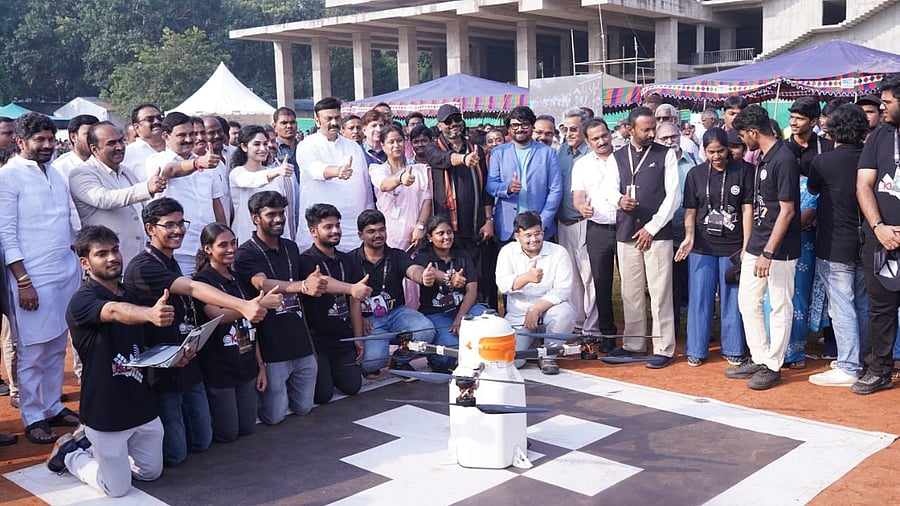
The project was executed under the university’s Student Satellite Program.
Credit: Special Arrangment
Hyderabad: In a remarkable demonstration of student-led space innovation, students of KL Deemed-to-be University (KLEF) in Andhra Pradesh, successfully launched three satellites KLSAT-2 (2U CubeSat), KLJAC (Lightweight Pico Balloon Satellite), and CanSat (4U Module) from the university’s Vaddeswaram campus recently.
The project was executed under the university’s Student Satellite Program and led by the KLSAT Team from the RF & Microwave Centre of Excellence, in collaboration with the Andhra Pradesh State Council of Science & Technology (APCOST). Each mission carried unique scientific goals and experimental outcomes.
Unlike conventional orbital satellites launched from spaceports, these student-developed satellites belong to the High-Altitude Balloon (HAB) and Pico-Class Near-Space Mission categories. Such missions are legally permitted to launch from open grounds after obtaining necessary clearances. Designed for near-space scientific experimentation rather than orbital deployment, they use high-altitude balloons instead of rockets as launch vehicles. All safety protocols, including NOTAM clearance, were duly followed.
Though smaller in scale, these missions replicate real satellite operations and systems. They feature live telemetry, onboard computers, sensors, communication modules, and recovery systems similar to those of space-grade satellites. The experiments were conducted at near-space altitudes of around 30–35 km — a region often used globally by agencies like NASA, ESA, ISRO, and universities such as MIT, Stanford, TU Delft, and Cambridge to validate aerospace subsystems before orbital launch.
One of the star performers of the trio, the KLJAC satellite, is an ultra-light Pico Balloon model roughly the size of a credit card. Designed for tropospheric research and telemetry testing, the satellite has already traveled over 800 km, maintaining a cruising altitude of 14 km for several days. Built entirely by students, it successfully transmitted real-time atmospheric data, including temperature, pressure, and humidity, which were decoded by the university’s ground station. The KLJAC is among the smallest operational educational satellites ever developed in India.
The second mission, KLSAT-2 (2U CubeSat), featuring a Hybrid AeroSwift VTOL Flight-Cum-Flight Module, evolved from its earlier 1U version—enhancing its capability for environmental monitoring and spectrometer-based data collection across 18 wavelengths. Lasting 60 to 90 minutes, the mission focused on real-time communication and drone-assisted deployment, marking a first-of-its-kind experiment by students in the country.
A total of 46 dashboard parameters were developed for live mission tracking, with 34 students contributing across every stage from conceptual design and fabrication to launch and recovery.
“Watching our satellite lift off was an emotional moment for all of us. Months of hard work, failures, recalibrations, and teamwork finally came alive in those few seconds. This project taught us that innovation is not just about science; it’s about perseverance, coordination, and belief,” said a student team member.
Congratulating the students, KL University Chancellor Koneru Satyanarayana said, “Our vision has always been to transform education into innovation. When young minds are empowered with technology, mentorship, and imagination, they can truly reach for the stars. These successful launches stand as a tribute to India’s new generation of innovators.”